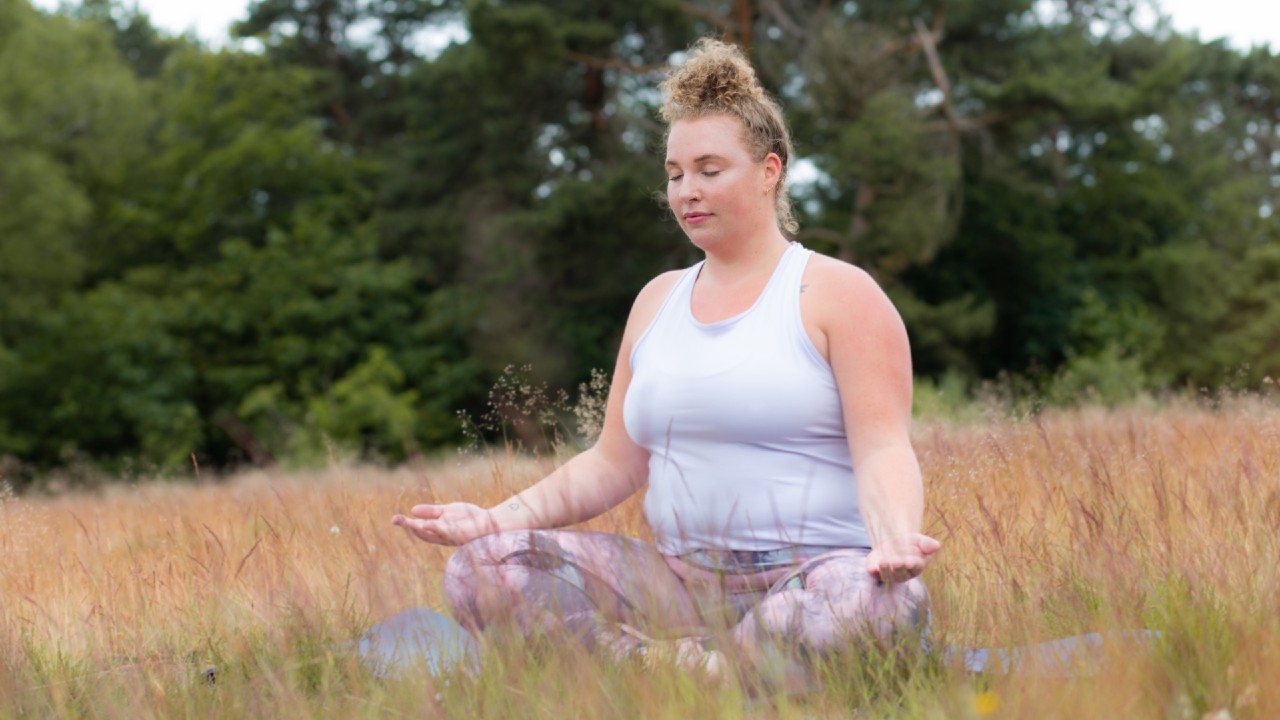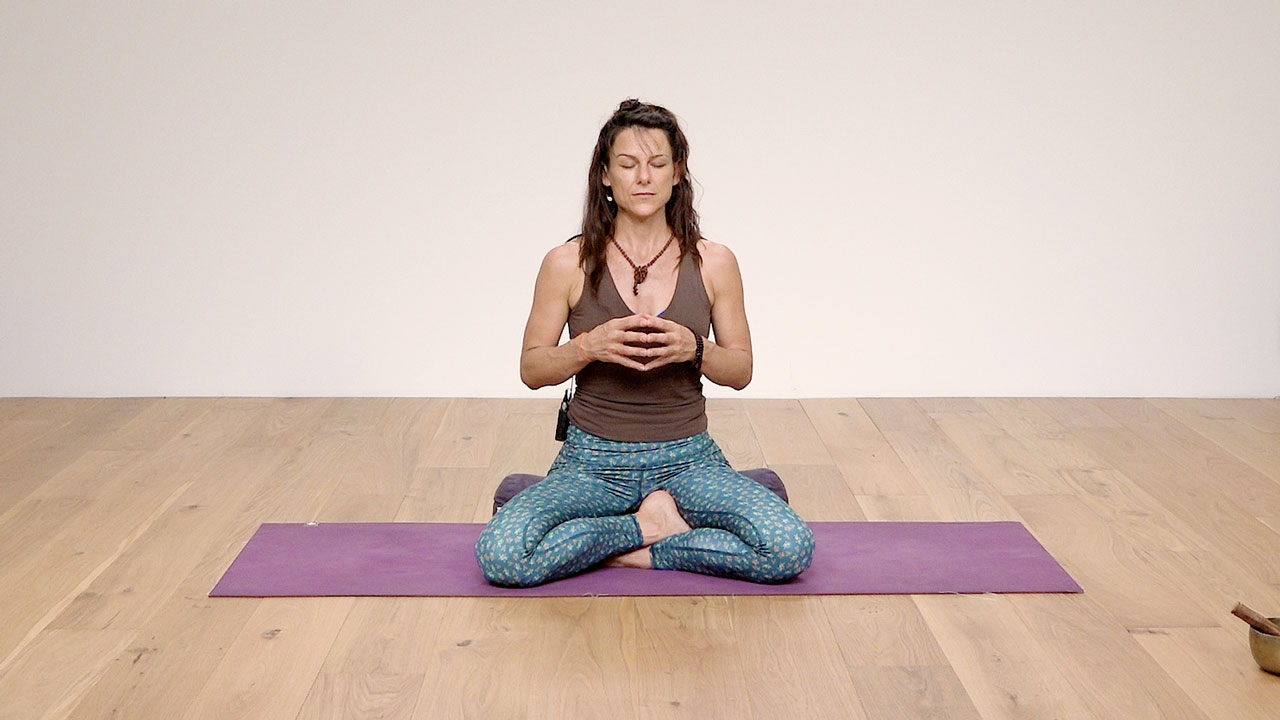What is Loving Kindness Meditation?
Loving Kindness Meditation or Metta meditation is a centuries old practice that originally comes from the Buddhist tradition. It involves repeating a set of phrases sending out your wish that you, and all beings, be happy, peaceful, and healthy.
The phrases are traditionally something like:
- May I (you / we) be happy
- May I (you / we) be peaceful
- May I (you / we) be well
You begin by saying these phrases to yourself and then to an increasingly wider group: starting with someone you love or feel close to, then someone neutral, someone you have some negative feelings about, and finally expanding this out to all beings.
Why is it useful?
For those of us who tend to err on the side of cynical it might sound a little simple and sugary on paper. But as Sharon Salzberg, leading meditation teacher and author of Lovingkindness, puts it:
… in reality, the practice of loving-kindness is about cultivating love as a strength, a muscle, a tool that challenges our tendency to see people (including ourselves) as disconnected, statically and rigidly isolated from one another. Loving-kindness is about opening ourselves up to others with compassion and equanimity, which is a challenging exercise, requiring us to push back against assumptions, prejudices, and labels that most of us have internalized.
And as I’ve found with a lot of aspects of yoga, It’s only when you actually get on your mat and practice with intention and attention to really experience what it’s really about!
In this article I’ll cover some of the evidence-based benefits of Loving Kindness Meditation (LKM), a script to follow and make your own, plus some advice from meditation teachers on EkhartYoga to make this practice more meaningful.
7 Benefits of Loving Kindness Meditation
Modern science increasingly backs LKM up as a powerful practice which brings a host of emotional, social, neurological and physical health benefits. Some of the studies into LKM have shown it is associated with:
- Increased positive emotions such as love, joy, awe and hope which led to improvements in purpose in life, social support and life satisfaction (Fredrickson, and colleagues, 2008)
- Reduced self-criticism and depressive symptoms in self-critical individuals (Shahar et al (2014)
- Increased empathy (Klimecki et al (2013)
- Improved vagal tone – the vagus nerve is connected with our rest and digest system – (Kok et al (2013)
- Reduced symptoms of chronic lower back pain – including pain, anger, and psychological distress (Carson et al., 2005).
- Slower biological ageing – telomeres are genetic materials which shorten due to stress and ageing. Women with experience of LKM had longer telomere length compared to a matched control group. Hoge et al (2013)
- Immediate relaxation benefits – while most of these studies looked into 6 to 7 week programs, just 10 minutes of loving-kindness meditation has an immediate measurable relaxing effect as shown by activity in the parasympathetic nervous system and slower respiration (Law, 2011)
Try out this free Loving Kindness meditation
If you haven’t done this practice before, I recommend following an online meditation like Tashi Dawa’s or George Langenberg’s short version of this meditation.
If you’re doing the meditation on your own, spend time first thinking about what phrases you will use. Traditionally, phrases like “May I be safe,” “be happy,” “be healthy,” are used but you can be creative using phrases that speak to you – to make the statements more personal. Stick to a small number and keep them simple so you can repeat them easily. Here are some suggestions:
- May I be happy
- May I be peaceful
- May I be well
- May I live with ease
- May I find deep joy
- May I be free of pain
- May I be free from harm
- May I be free of suffering
- May I feel safe
To begin
Find a comfortable posture sitting down on a cushion or a chair. Close your eyes and connect to the rhythm of your breath. George Langenberg suggests imagining you are sitting with someone or something who embodies loving kindness to you – it could be a spiritual teacher, a pet, a warm light, or even a favourite tree.
To yourself
Bring your attention inwards. Picture yourself in your mind’s eye. Become deeply aware of the person you are. As Tashi Dawa says in her class “Saturate yourself with awareness”.
Repeat your chosen phrases silently to yourself two to five times depending on the time you have. (Note how many repetitions you do and do the same number for all people).
- May I be happy
- May I be peaceful
- May I be well
Don’t rush through the repetitions. Speak them slowly and deliberately – say it with feeling!
If you notice other thoughts coming in, gently bring your attention back to the words.
If you find it difficult to send this love to yourself, think of an act of kindness you’ve done, it can be something small, and say the words from this place of goodness. Or you can think of yourself as a child and wish that child well.
Someone close to you
Think of someone you are close to, with whom you share your life – a friend, partner, child – someone you love. Picture them sitting in front of you – let that image become really rich. Wherever this person is in real life, speak your chosen phrases to them as though they are there with you:
- May you be happy
- May you be peaceful
- May you be well
When you have repeated these phrases a few times, let that person stand up and walk away again.
Someone neutral
Next think of someone you have neutral feelings about. This could be someone you cross paths with in your neighbourhood sometimes, someone who works in your local shop etc. Sit them down in front of you. Speak your phrases to them:
- May you be happy
- May you be peaceful
- May you be well
When you are finished, let that person stand up and walk away again. Come back to your breathing.
Someone you have negative feelings about
In your mind’s eye picture a person you have some negative feelings or memories about. Someone you’ve had a disagreement with, a long standing grudge, or maybe a brief moment of disrespect. It could be an ex-partner or partner, a sibling, a colleague. This can be the most challenging – along with sending love to yourself – if the feelings are too raw or strong, choose someone you don’t know personally so well or imagine this persona as a child.
Again, speak as though they are sitting in front of you and you are speaking directly to them. Repeating the phrases:
- May you be happy
- May you be peaceful
- May you be well
As that person stands up and walks away, come back to yourself – you can bring your hands to your heart and belly if this helps to connect back with yourself again.
To all beings
For this final round we send loving kindness to all living beings – speaking to all of life. In her class, Tashi suggests you might like to sit with your hands in an open gesture – resting the backs of your hands on your thighs.
Expand your awareness. Imagine your family, then all their friends, then all their friends’ families. Think about people you might meet one day, and to people you might never meet. Repeating your phrases and sending them out to wherever life exists:
- May we be happy
- May we be peaceful
- May we be well
When you come to the end take a few more moments in quiet meditation, focusing on your breath again and any sensations in your body.
Related
How to cultivate kindness and compassion – We’ve probably all experienced being looked at with ‘critical eyes’ – but too often this harsh gaze is our own. How about trying a different approach?
3 ways to develop your capacity to love – Loving kindness involves developing an authentic and unconditional love for all beings – but how do we live from a place of love, and what blocks us from doing so?


